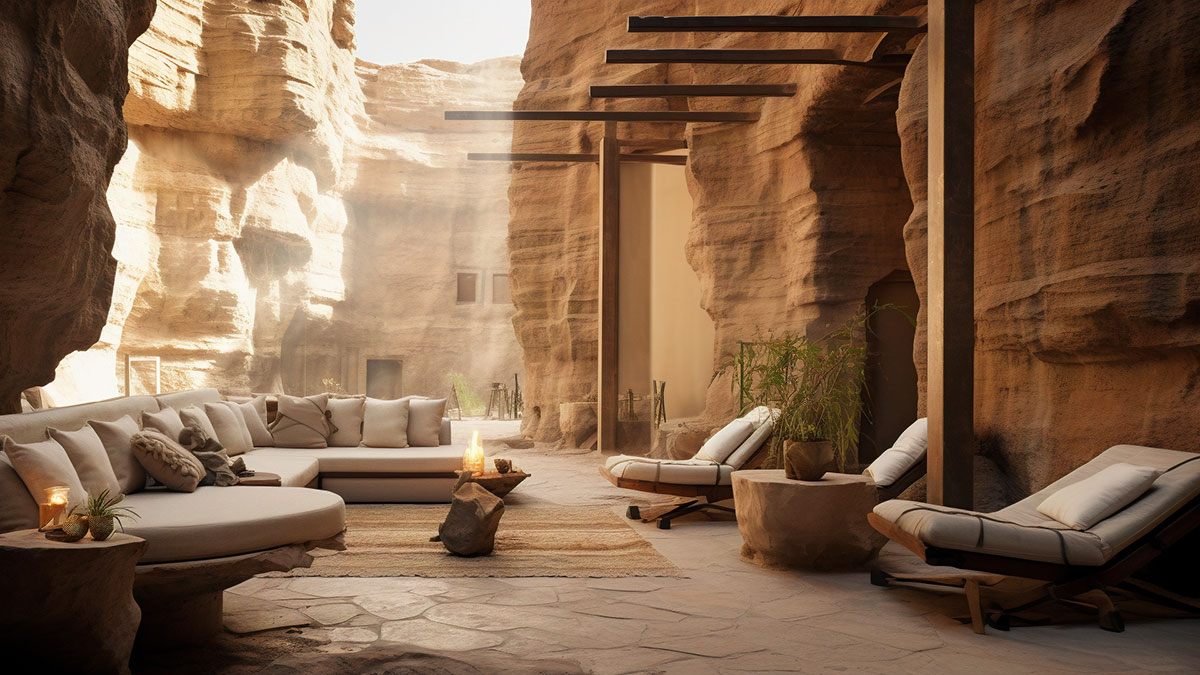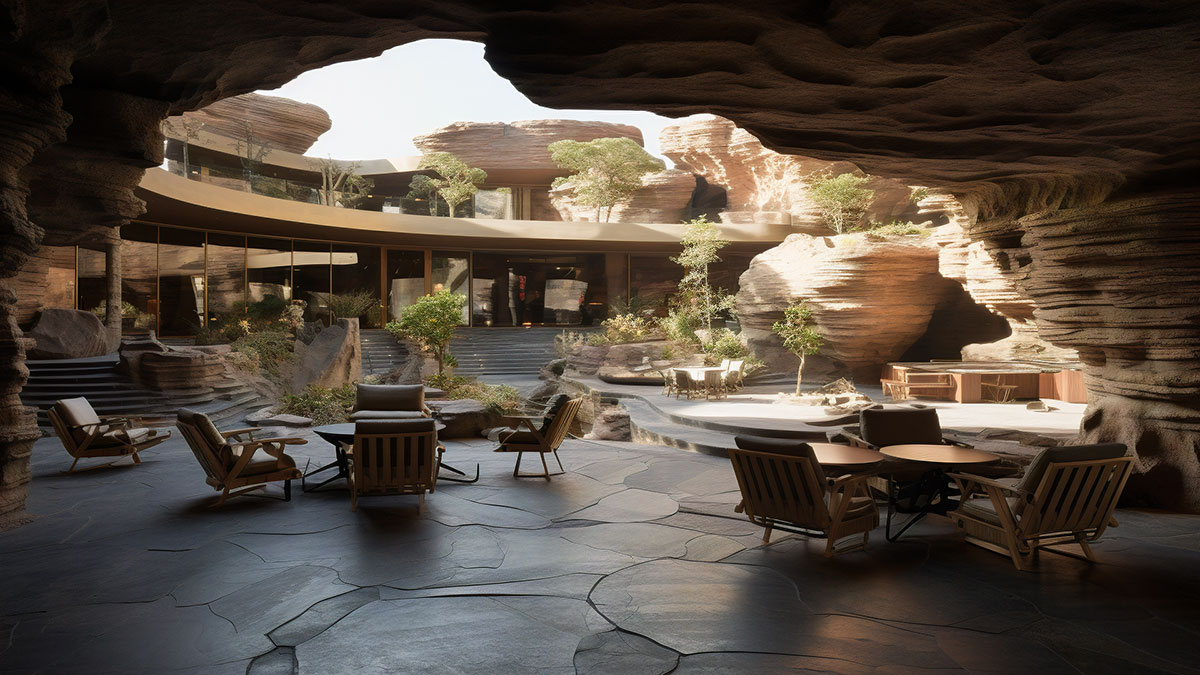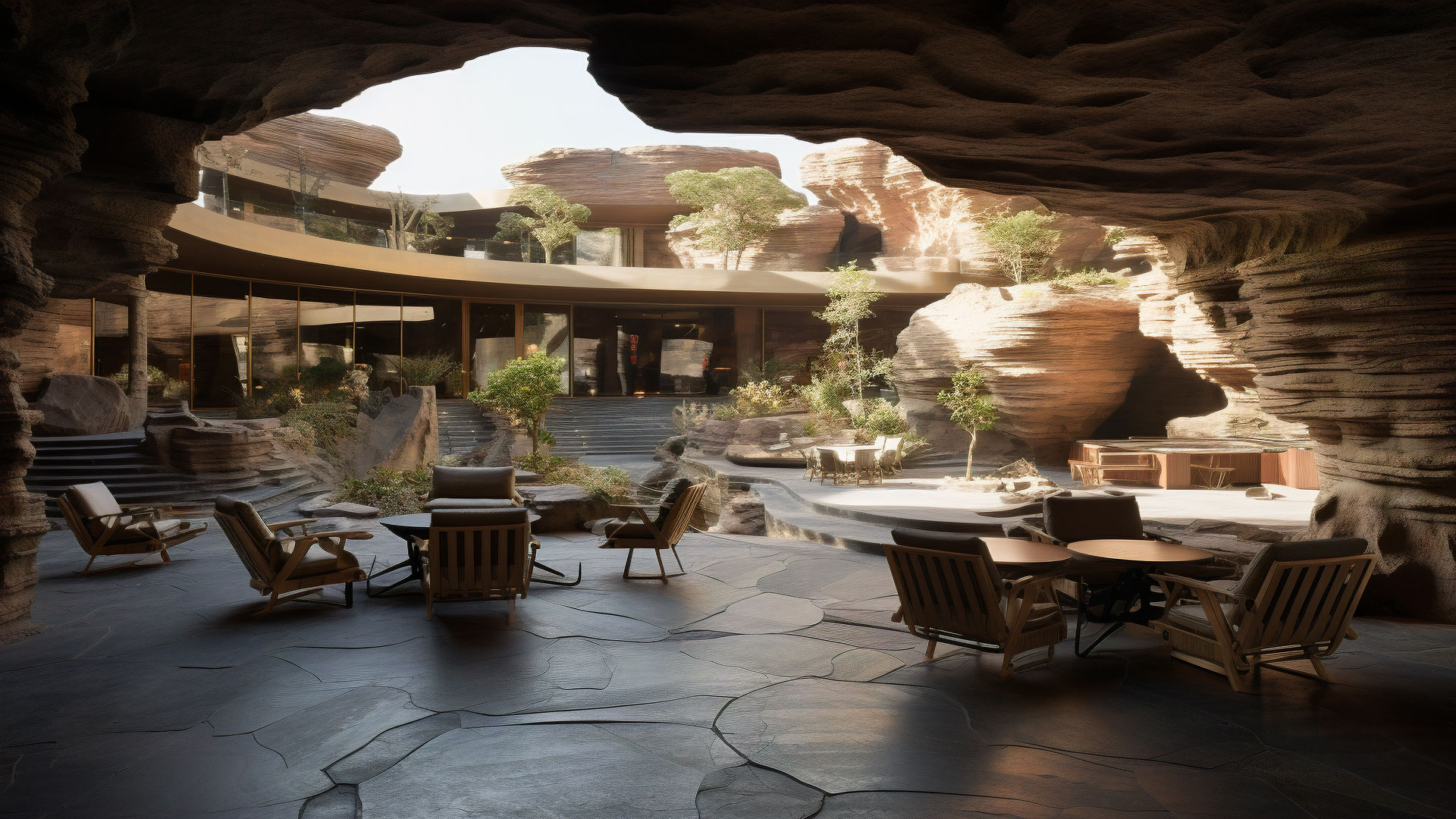In the Amusement Logic’s Design Department, we believe that the integration of buildings into the natural environment is a fundamental field of study and contributes decisively to the evolution of contemporary architecture. Precisely, the resort hotel whose design we are currently developing in Saudi Arabia is a clear example of the way in which architecture coexists harmoniously with the environment. In the case of this geographical location, even more so, and especially due to the challenging geographical conditions it presents.

The first observation when analysing the design of the resort hotel is its continuity with the desert environment. By being inserted into the rock formations, the tourist establishment takes advantage of the inherent qualities of the terrain, in a visual and functional dialogue with the landscape. Thus, the openings in the rock not only allow natural light to enter and be dosed, but also establish a direct visual relationship with the surroundings. The ochre tones we have chosen respect and reproduce the chromatic palette of the desert. In addition, the areas reminiscent of the area’s ravines offer interesting spatial experiences. The thematic integration of the desert into the architecture is also achieved through the use of local materials and construction techniques with a clear sensitivity to sustainability, in addition to the authenticity of the project.

The interior design, with passageways and common areas, maximises functionality without sacrificing aesthetics. Each space responds to both user needs and environmental conditions. Thermal control is essential for habitability in desert climates. Therefore, the decision to partially conceal the hotel within rocks is not merely aesthetic; it has a crucial thermal function. By being enveloped by rocks, the building benefits from the terrain’s thermal inertia, which helps maintain stable interior temperatures and reduces reliance on artificial air-conditioning systems. In addition, the orientation of the openings and air circulation contribute to this thermal regulation and thus to the creation of a pleasant and comfortable indoor environment.

This partially buried resort hotel bears witness to the solutions derived directly from the analysis and understanding of the environment in architecture. More than a simple structure, it is a detailed study of adaptation, functionality and design, in other words, a benchmark in contemporary architecture of landscape integration.
RELATED STORIES
Newsletter



